Physical Address
304 North Cardinal St.
Dorchester Center, MA 02124
This chapter will cover several disorders of the skin vasculature, including livedo reticularis, flushing and erythromelalgia, as well as vascular ectasias such as telangiectasias and venous lakes. Some of the diseases described here are important skin signs of systemic disease, while others are incidental findings. Additional disorders of blood vessels are covered elsewhere, e.g. infantile hemangiomas ( Ch. 103 ), vascular malformations ( Ch. 104 ), and vascular neoplasms and proliferations ( Ch. 114 ).
A common physiologic finding consisting of a mottled, reticulated vascular pattern
May occur secondarily due to an underlying disease, e.g. autoimmune connective tissue disease, antiphospholipid antibody syndrome
The pattern varies depending on the underlying cause
Appropriate investigations depend on the clinical context and associated findings
Livedo reticularis (LR) is an extremely common finding and usually results from a physiologic vasospastic response to cold exposure. Among normal healthy individuals, the predisposition to LR will vary. However, it can also be a reflection of a number of underlying systemic diseases. LR resulting from any cause can vary to some degree with changes in external temperature. Physiologic LR will usually disappear with warming and reappear with cooling whereas other variants may persist to varying degrees with warming.
The term “livedo reticularis” was first used by Hebra over a century ago to describe a violaceous skin discoloration caused by an abnormality of the cutaneous circulation. Renault (1883) and later Unna (1896) and Spalteholz (1927) suggested that a cone arrangement of the cutaneous microvasculature served as an explanation for the occurrence and pattern of LR .
LR results from alterations in blood flow through the cutaneous microvasculature system ( Fig. 106.1 ). The latter consists of arterioles that are oriented perpendicularly to the skin surface. The vessels then divide into capillary beds that in turn drain into a subpapillary plexus. It has been proposed that this arrangement of vessels gives rise to a series of 1–3 cm cones with the ascending arteriole at the apex of each cone. At the edge of the cone, the venous plexus is more prominent and the arterial bed is diminished. Any process that either reduces blood flow to and through the skin or reduces drainage of blood out of the skin will result in the accumulation of deoxygenated blood in the venous plexus, leading to the clinical appearance of LR .
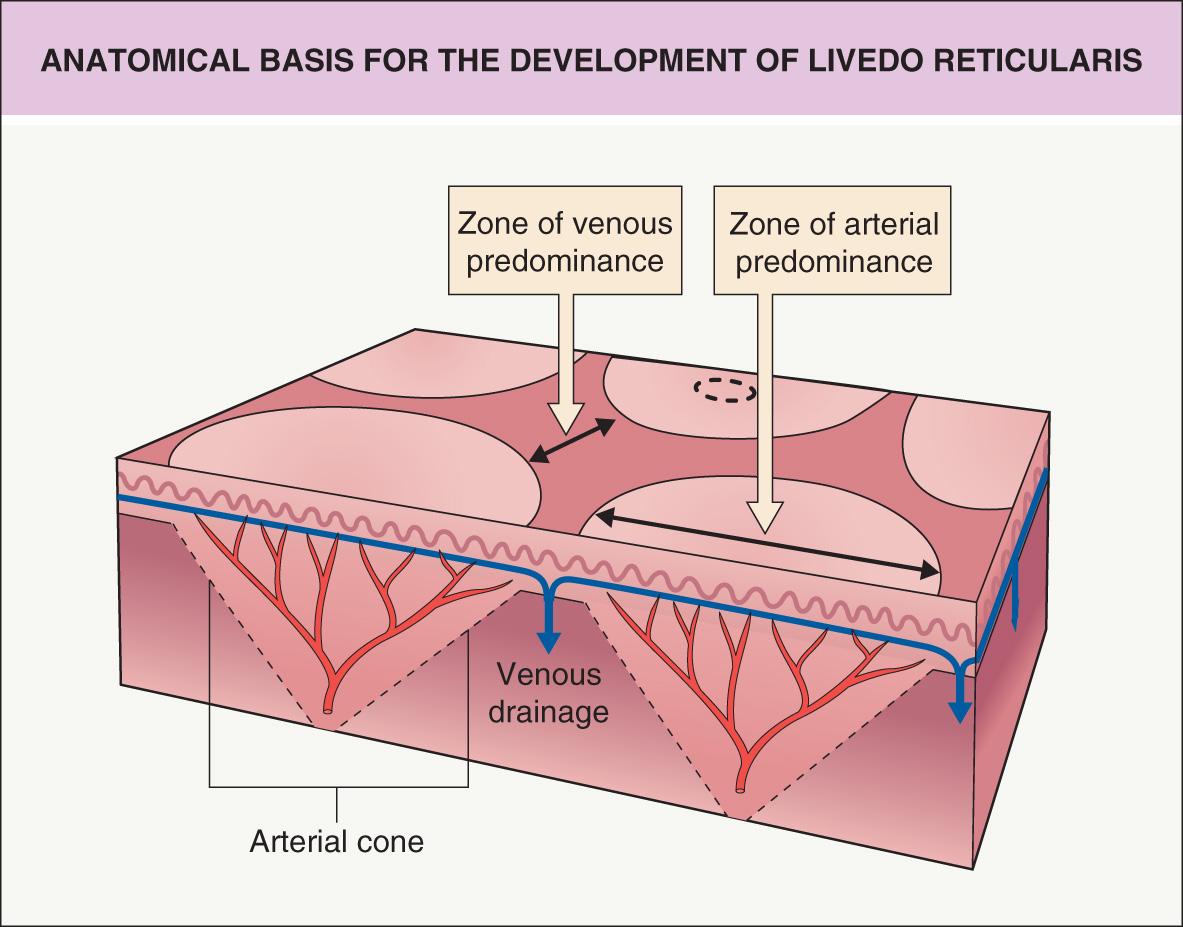
There are a number of causes of LR ( Table 106.1 ), and the clinical pattern of LR can vary with the nature of the underlying cause. A complete fine network is indicative of alterations in blood flow caused by vasospasm or by factors within the blood that alter the viscosity and the flow through the vessels. Vessel wall pathology and intraluminal obstruction are more likely to result in a patchy distribution of LR, depending on the distribution of the underlying pathology.
| CAUSES OF LIVEDO RETICULARIS |
| Congenital livedo reticularis |
|
| Acquired livedo reticularis |
| Vasospasm |
|
| Vessel wall pathology |
|
| Intraluminal pathology |
|
| Other |
|
Livedo racemosa refers to a form of LR that has a larger, branching, and more irregular pattern and is often more widespread, affecting both the extremities and the trunk ( Figs 106.2 & 106.3 ). It is generally indicative of several vaso-occlusive disorders including Sneddon syndrome , the antiphospholipid antibody syndrome (APS) , and lymphocytic thrombophilic arteritis .
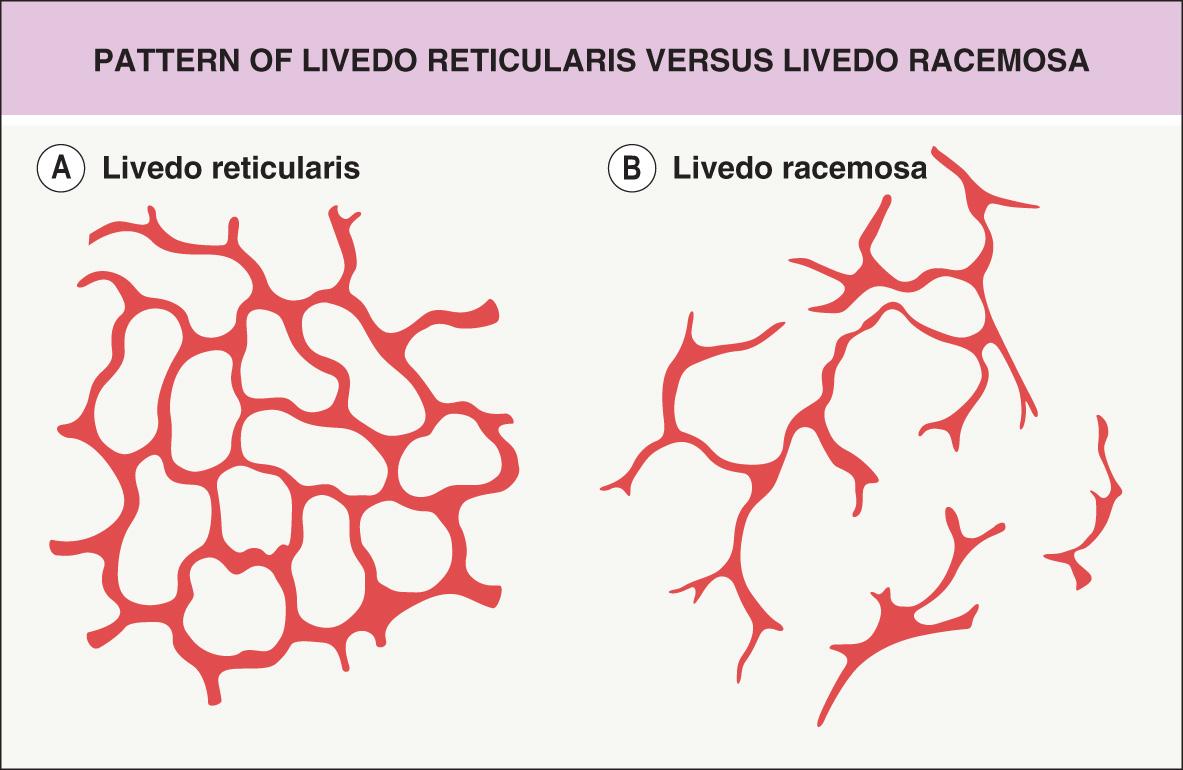
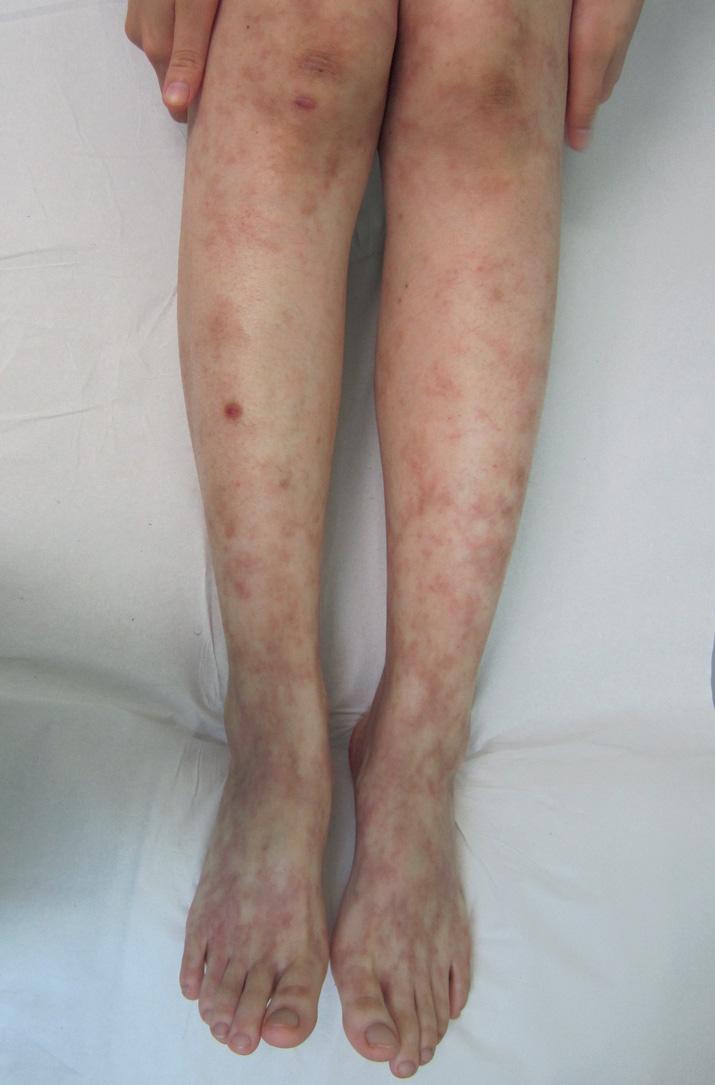
Cutis marmorata telangiectatica congenita (CMTC) is characterized by a persistent reticulated vascular pattern that is often limited to one extremity (see Ch. 104 ), but can be more widespread. Lesions are usually noted at birth, and, when the trunk is involved, there may be a sharp cut-off at the midline. Associated anomalies include other vascular malformations, limb asymmetry, and occasionally neurologic or ocular abnormalities . Cutaneous vascular changes can improve during the first few years of life, with 20% of patients showing complete resolution.
These terms are synonymous and refer to a normal pattern of LR that occurs in response to cold ( Fig. 106.4A ). It is often more marked in neonates, infants, and young children . In adults, it may be associated with a tendency towards acrocyanosis and chilblains.
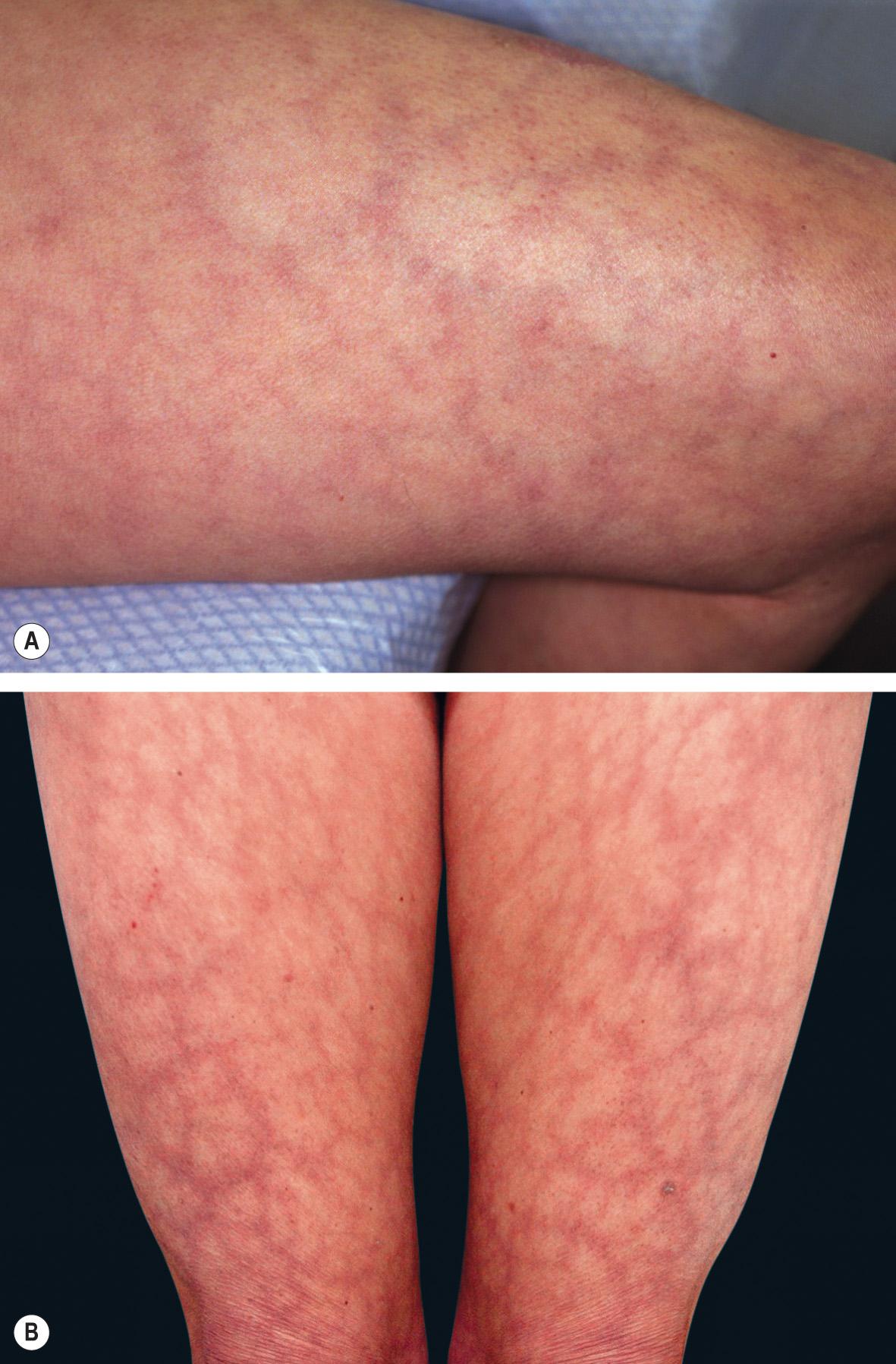
This refers to a persistent fine network of LR that is often widespread, particularly on the lower extremities. While there is some fluctuation with temperature, the LR will usually persist with warming. It is due to persistent vasospasm of arterioles and is not secondary to any underlying cause. However, primary LR is a diagnosis of exclusion and it is important to consider secondary causes (see Table 106.1 ). This is especially true when the LR is extensive .
Vasospasm is the most common cause of LR, including that seen in association with autoimmune connective tissue diseases (CTD; Fig. 106.4B ). Reflecting a vasospastic tendency, it occurs more commonly in patients with Raynaud phenomenon.
Vasculitis involving the medium-sized arterioles at the dermal–subcutaneous junction or in the deep dermis is the most common cause of vessel wall pathology associated with LR. Involvement of medium-sized arterioles is characteristic of cutaneous polyarteritis nodosa (PAN) , but can also be seen with systemic PAN and ANCA-associated vasculitides (see Ch. 24 ). Patients with lymphocytic thrombophilic arteritis, in which the peri-arteriolar inflammation is lymphocytic rather than neutrophilic, characteristically develop livedo racemosa (see Fig. 106.3 ) . Whether this disorder represents a distinct entity or a variant of cutaneous PAN is a matter of debate. LR can also be seen in patients with livedoid vasculopathy (see Ch. 23 ) .
Deficiency of adenosine deaminase 2 (DADA2) is an autosomal recessive autoinflammatory disorder (see Ch. 45 ). It has features of both Sneddon syndrome and polyarteritis nodosa, i.e. patients can have both a vasculopathy and vasculitis. Characteristic features include intermittent fevers, early-onset lacunar strokes, hepatosplenomegaly, hypogammaglobulinemia and lymphopenia, as well as cutaneous nodules and livedo racemosa (see Fig. 45.11 ) .
Calciphylaxis consists of calcium deposition in the walls of blood vessels (see Ch. 50 ). It is most commonly seen in the setting of end-stage chronic kidney disease complicated by secondary hyperparathyroidism. Calciphylaxis may initially commence with LR that then becomes purpuric and subsequently necrotic ( Fig. 106.5 ).
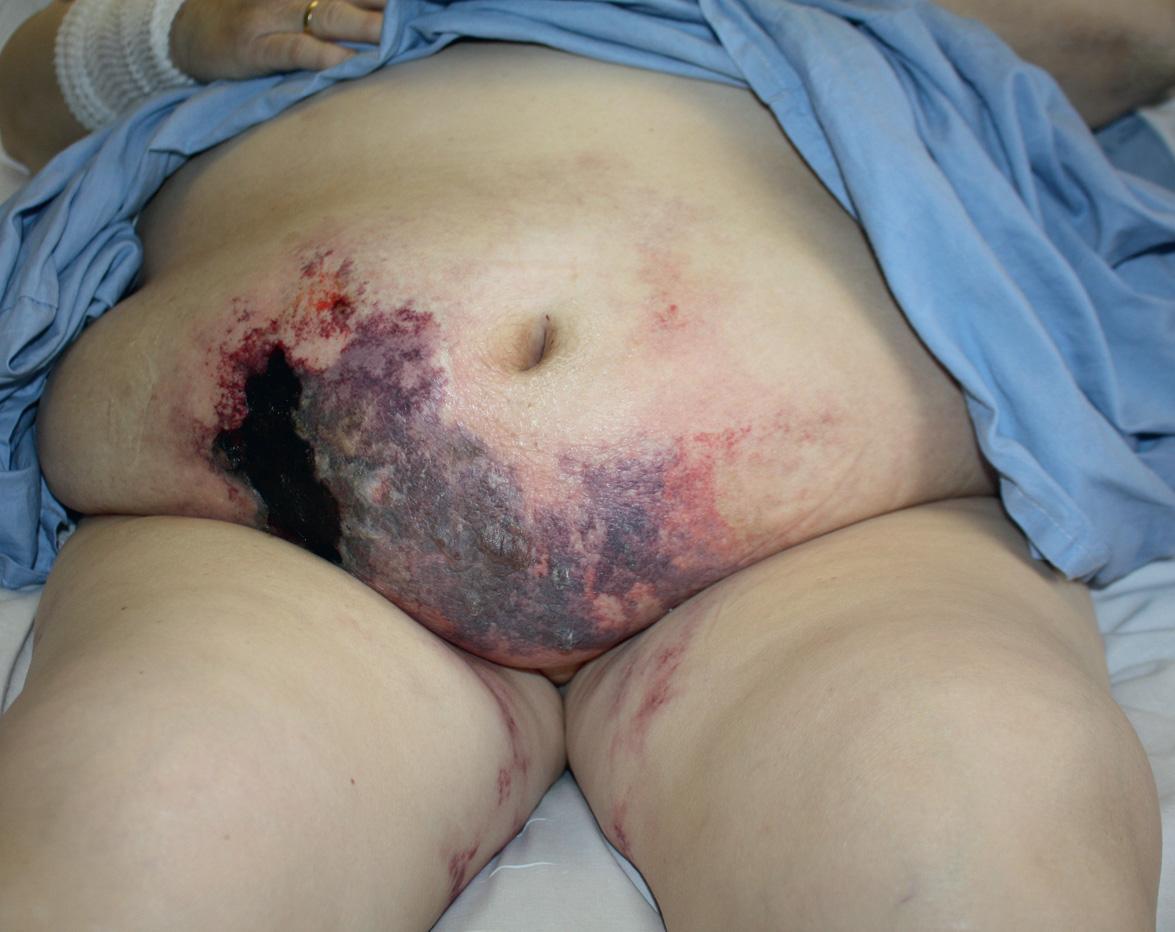
Sneddon syndrome is rare and is characterized by widespread livedo racemosa in conjunction with multiple cerebral ischemic episodes leading to progressive neurologic impairment (see Ch. 23 ). It remains uncertain as to whether the vascular pattern results from vasculopathy, vasculitis or coagulopathy (as some patients have antiphospholipid antibodies while others have DADA2), but characteristic changes are seen within affected vessels.
Become a Clinical Tree membership for Full access and enjoy Unlimited articles
If you are a member. Log in here